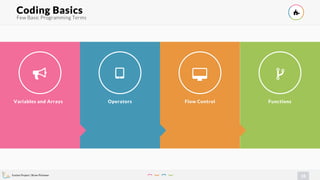

The design of algorithms is part of many solution theories of operation research, such as dynamic programming and divide-and-conquer. algorithm design A method or mathematical process for problem-solving and for engineering algorithms. They are ubiquitous in computing technologies. Algorithms can perform calculation, data processing, and automated reasoning tasks. algorithm An unambiguous specification of how to solve a class of problems. It advocates adaptive planning, evolutionary development, early delivery, and continual improvement, and it encourages rapid and flexible response to change. agile software development An approach to software development under which requirements and solutions evolve through the collaborative effort of self-organizing and cross-functional teams and their customer(s)/ end user(s).

aggregate function In database management, a function in which the values of multiple rows are grouped together to form a single value of more significant meaning or measurement, such as a sum, count, or max. Monte Carlo methods are used to introduce randomness. It combines elements of game theory, complex systems, emergence, computational sociology, multi-agent systems, and evolutionary programming. agent-based model (ABM) A class of computational models for simulating the actions and interactions of autonomous agents (both individual or collective entities such as organizations or groups) with a view to assessing their effects on the system as a whole. The architectures implemented by intelligent agents are referred to as cognitive architectures. agent architecture A blueprint for software agents and intelligent control systems depicting the arrangement of components. The result of this process: an abstract concept- object created by keeping common features or attributes to various concrete objects or systems of study. In software engineering and computer science, the process of removing physical, spatial, or temporal details or attributes in the study of objects or systems in order to more closely attend to other details of interest it is also very similar in nature to the process of generalization. Abstract methods are used to specify interfaces in some computer languages. It is often used to specify that a subclass must provide an implementation of the method. abstract method One with only a signature and no implementation body.


This contrasts with data structures, which are concrete representations of data from the point of view of an implementer rather than a user. A abstract data type (ADT) A mathematical model for data types in which a data type is defined by its behavior ( semantics) from the point of view of a user of the data, specifically in terms of possible values, possible operations on data of this type, and the behavior of these operations.


 0 kommentar(er)
0 kommentar(er)
